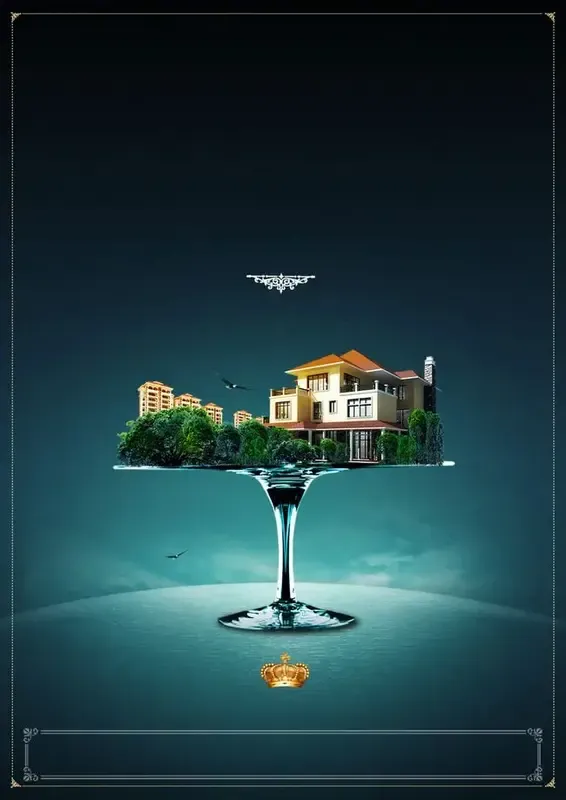Let us lead you in ways to design a garden that will thrive in the dark, if not to survive, then lighten up to become a refuge for the soul in nature's beauty.
Sunset beyond the rim of the horizon, twilight oozing over everything on earth, is the most wonderful hour for enchanted hours outside. The garden woke full moonlight and all its dirt, grass, trees, and bushes magically ceased to be mere portions of the very essence which is life on this earth. A place of ghostly shadows that dance and a song of silence; where senses come awake to fragrant whispers, and tender is the caress of moonlight. But going from a simple garden into such a moonlit vision does take some consideration and a bit of magic.
It is a survey all about design for a moon garden and whisks us to every possible angle on how to make that nocturnal retreat shine with enchantment. On the way, we learn the secrets of picking the perfect palette of plants and how to harness the powers of moonlight to make the spot out of the ordinary. In the land of flowering nights, every petal and leaf strokes on the canvas of nights. Exotic, effortless flowers that bloom at night, all around. They will combine with color, scent, and mystery to make it truly magical, truly irresistible—Bohemian dreamy; a crescent-shaped corner of land, sacred.
The Perfect Spot: cornerstone of Moon Garden Design
What is most important, is that it be placed in a location that is able to bring about this magic feeling at night. The best placement is where moonlight effects could most dramatically turn your garden into an optical paradise of surrealist proportion. Here's why;
- Exposure to Moonlight:
The best place for a moonlit garden would be somewhere that gets exposed to moonlight. Avoid any place where large trees or buildings obstruct your view of the light of the moon.
- Privacy and ambience:
The Moon Garden should be isolated, and so is it otherwise attuned to noise, very secluded. Look out for a place that is secluding where complete serenity and silence prevail to realize it then in private.
- Garden orientation:
Consider first of all the aspect of the garden. It can be north, south, east, or west-facing. To what degree the garden's aspect is important. Historically, plants that could be grown in the warm and cosy choices in the south are less available when considering a north-facing garden. North-facing gardens are cooler, and they do absolutely limit plant choices in some regard.
- Ground level:
Slightly higher than the eye level; hence, it gives a view of most garden features under moonlight and better light, above the lighting, to the plants in getting a better view of the plants.
It is, after all, the mystical magic of the retreat of your night with your garden under the moon that really is site of a chorister of silent siren song seducing you with its lunar loveliness.
It is, after all, the mystical magic of the retreat of your night with your garden under the moon that really is site of a chorister of silent siren song seducing you with its lunar loveliness.
Plant selection: the cornerstone of a moon garden
Probably the most important part of making a moon garden is plant selection. Basically, you're looking for flowers that radiate when the sun is setting—those that seem to glow and sparkle. Forethought with your plant choice will take that light and turn a night garden into a magical grotto.
- Key considerations
✓Color: The flowers and the foliage should be of light colors—whites, silvers, light yellows, light blues. The flowers in these very colors give an effect to the night garden of being glowingly lit by the moon itself. Your entire garden will take on the appearance of magic and fantasy.
✓Bloom Time: The blooming of the night flowers makes a great addition to the ambiance. Most species of flowers are known to bloom after the sun has gone down. Of course, these add special mystique to your moon garden. Examples include moonflowers, evening primrose, and night-blooming jasmine.
✓Perfume: Plant in the garden specimens that bear rich or sweet or pungent fragrances. Flowers with fragrance always more intense at night that is why they are beautiful to the sense of smell of human beings. Great example of choices is gardenias, honeysuckles and lavender.
✓Foliage: Plant specimens that have silver or variegated foliage. Lamb's ears and dusty millers produce a lush veg mold formed with a good looking silvery emissions.
✓Know the right plant shape: Be thinking about your plant size as well as the shape or growth habit of the plant. You will want to have some big, architectural plants to give you height or a vertical element, but then some little, low growing ground covers to soften the area.
✓Bloom Time: The blooming of the night flowers makes a great addition to the ambiance. Most species of flowers are known to bloom after the sun has gone down. Of course, these add special mystique to your moon garden. Examples include moonflowers, evening primrose, and night-blooming jasmine.
✓Perfume: Plant in the garden specimens that bear rich or sweet or pungent fragrances. Flowers with fragrance always more intense at night that is why they are beautiful to the sense of smell of human beings. Great example of choices is gardenias, honeysuckles and lavender.
✓Foliage: Plant specimens that have silver or variegated foliage. Lamb's ears and dusty millers produce a lush veg mold formed with a good looking silvery emissions.
✓Know the right plant shape: Be thinking about your plant size as well as the shape or growth habit of the plant. You will want to have some big, architectural plants to give you height or a vertical element, but then some little, low growing ground covers to soften the area.
- Examples of Moon Gardens plants;
•White Blooming Plants: Moonflowers, Oriental Lilies, Jasmine, Gardenias, White Roses.
•Silver Green Plants: Lamb's ears, Dusty Miller, Artemisia .
Fragrant
•Fragrant plants:Lavender, Honeysuckle, Night Blooming Jasmine
By Planting these plants in the rising order of the above-mentioned parameter you will develop a moon garden, an arena of serenity and rich with beauty.
•Silver Green Plants: Lamb's ears, Dusty Miller, Artemisia .
Fragrant
•Fragrant plants:Lavender, Honeysuckle, Night Blooming Jasmine
By Planting these plants in the rising order of the above-mentioned parameter you will develop a moon garden, an arena of serenity and rich with beauty.
Reflective Surfaces: Moon Garden Design Tip
More often, a moon garden is designed to radiate through attractively under the soft light of the moon, so it only makes sense to take advantage of the use of the reflective surfaces in maximizing its appeal to become a moon garden.
- Benefits of Reflective Surfaces
✓These reflective surfaces, much as in water features, polished and thin stones, mirrors, or even stainless steel sculptures, may grab the faint moonbeams and stretch these to create a radiant, eerie sight.
✓Capture interest: They bring life into focal points and, at the same time, draw visual interest to the garden by reflecting moonlight, stars, or surrounding greenery in enchanting ways.
✓Reflective surfaces within a garden make one feel that there is so much more space and a much bigger area, especially during the night.
✓Capture interest: They bring life into focal points and, at the same time, draw visual interest to the garden by reflecting moonlight, stars, or surrounding greenery in enchanting ways.
✓Reflective surfaces within a garden make one feel that there is so much more space and a much bigger area, especially during the night.
- Examples of reflective surfaces
✓Uses of polished gravels and pebbles: Some gardens polish gravels and pebbles to be used primarily for pathways, borders, or under trees and bushes arranged spirally.
✓Mirrors: Place mirrors in some parts in such a way that they will create illusions of distances that would add up to beauty, by creating reflections. But not too much; otherwise, that would be cheesy.
✓Stainless steel garden sculptures: These are something modern and chic; they actually can become your attention grabbers to capture and hold the moonlight.
✓Mirrors: Place mirrors in some parts in such a way that they will create illusions of distances that would add up to beauty, by creating reflections. But not too much; otherwise, that would be cheesy.
✓Stainless steel garden sculptures: These are something modern and chic; they actually can become your attention grabbers to capture and hold the moonlight.
- Remember:
The root illusion of a moon garden, in fact, is one of balance: reflective surfaces balanced by plants that either owe light from their flowers or frosted foliage. By definition, reflective surfaces will provide more light, but those plants giving light in the form of flowers or foliage will likely be of most interest, contrast-wise, and thus visually interesting. That is why a garden shall be lovely; for when a garden with the reflective surfaces of the reflective personality to the moon is created.
Moon Garden Designs That Glow at Night: FAQ'S
- Q: What is a moon garden?
A: A moon garden is simply an evening garden; most of the action takes place at night. It can incorporate light-colored flowers, fragrant plants, and shiny surfaces that help in setting an ambiance to maximize the beauty of moonlight.
- Q:What is the best time to plan a moon garden?
A: Early spring will be the best time to plan a moon garden. By spring, you have ample time to choose and plant the flowers and shrubs of your choice before the summer months.
- Q: How big should a moon garden be?
A: Although it can be anything from the very smallest patio containers on rooftops to outdoor spaces it does have to be intimate and charming in nature.
- Q: What colors work well in a moon garden?
A: If this is the case traditional choices for the moon garden would be white, silver, pale yellow and soft blues. Colors seem nice in reflected light of the moon.
- Q: What plants are good in a moon garden?
A: Popular choices include white roses, jasmine, moonflower, evening primrose, and silver leaved plants like dusty miller. Plants with fragrant flowers add another sensory element on their own.
- Q: Are there special growing requirements for plants in a moon garden?
A: The majority of plants in your moon garden are cultivated similarly to most garden plants. Some plants have special light or watering requirements so get familiar with these needs. Additional fertilization may be required with fragrant plants.
- Q: Can perennials and annuals be used together in a moon garden?
A: Absolutely! Fill a moon garden with annuals for instant color and perennials for structure to create a beautiful display.
- Q: How do I plan the layout for my moon garden?
A: First of all, decide upon a centerpiece—perhaps a bench or a sculpture. Just set your plants in layers, with the taller at the back and the shorter in the front. Add some curving paths or stepping stones to add interest.
- Q: Should I include water features in a moon garden?
A: Water features are nice in a moon garden, but they're especially nice if they create soft sounds, like splashing water. There's something quite magical about reflected moonlight. goose-neck spout
- Q: How important is fragrance to the moon garden?
A: A moon garden is not really itself without fragrance. It just turns the experience so much more sensual and it helps to raise a feeling of romance.
- Q: Will I have to rely on artificial lighting in a moon garden?
A: The basic lighting comes from the light of the moon. However artificial lighting can be integrated with softened effects that would enhance the scene of the garden view. Solar light or lanterns can be installed to slightly light it up.
- Q:What do I do so my moon garden is a serene place?
A: Add soft textures like grasses and ferns. Provide comfortable seating and perhaps a small outdoor fountain. You could play gentle music or nature sounds.
- Q: How much maintenance does a moon garden require?
A: Maintenance is typical of any garden; weeding, watering and pruning. Regular deadheading will encourage continued blooming.
- Q: What is the best way to enjoy my moon garden?
A: Yes, life's simple pleasures indeed hold tremendous beauty. Sit, watch, listen, smell, and enjoy your garden. Share it with friends or that special someone in your life. Why not have a moonlit gathering or dinner?
- Q: Can I meditate or do yoga in a moon garden?
A: Of course! It is in that tranquil ambiance of the moon garden that one would situate meditation and/or the practice of yoga in finding calm and mindfulness.
Use these quick tips and answers to common questions, and make your moon garden magic—an enchanting retreat for yourself and your guests.
Conclusion
And if, indeed, you had used good judgment in your choice of plant material, taken fair advantage of reflective surfaces, and pitched in to set a welcoming mood, you could turn your garden into a paradise that blooms by night. In fact, it is in such a serene environment that you allow your mind to start devising. A little effort and creativity from you, too, and you'll be out there soaking in the mesmerizing splendor of your very own moonlit haven.
Of course, a rationale of the argument is that this is in no way your garden. Let go, unwind, breathe it deeply in; let peace from your nocturnal paradise seep into your bones.
Of course, a rationale of the argument is that this is in no way your garden. Let go, unwind, breathe it deeply in; let peace from your nocturnal paradise seep into your bones.


























